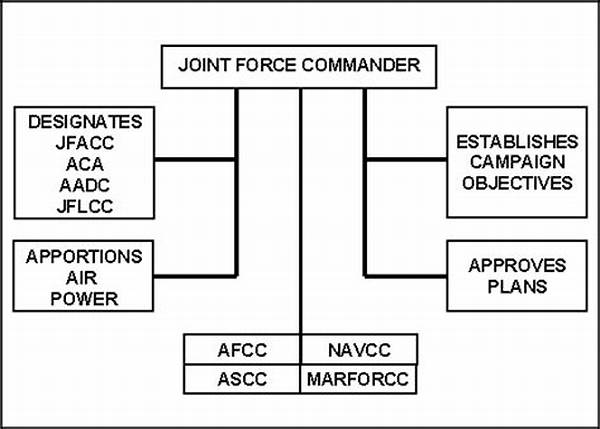Joint force operational coordination represents a pivotal aspect of modern military strategy, crucial for ensuring the seamless integration and cooperation of diverse military units and resources. As conflicts grow in complexity, the need for coordinated efforts among different branches of armed forces becomes indispensable. The strategic harmonization of multi-faceted operations requires a robust framework that fosters collaboration, enhances communication, and optimizes resource allocation. In this article, we will explore various aspects of joint force operational coordination, emphasizing its importance and impact on contemporary military operations.
The Importance of Joint Force Operational Coordination
Joint force operational coordination involves synchronized efforts among Army, Navy, Air Force, and other military branches to achieve unified goals. This coordination is imperative for maintaining operational efficiency and achieving strategic objectives. It enhances the capability of forces to respond swiftly to diverse challenges and adversaries. Strategic alignment and commitment to collaborative planning are essential to ensure that all units work synergistically towards common goals. Consequently, joint force operational coordination significantly contributes to heightened situational awareness, streamlined decision-making processes, and enhanced mission effectiveness. This cohesive approach is not only vital for addressing conventional warfare but also for countering asymmetric threats in a dynamic global security environment.
The evolution of joint force operational coordination has been influenced by advancements in technology and communication. The implementation of cutting-edge systems and tools enables real-time data sharing and analysis, providing commanders with a comprehensive operational picture. This integrated approach helps anticipate and mitigate potential operational risks, ultimately leading to more informed strategic decisions. Moreover, joint force operational coordination facilitates interoperability, ensuring that disparate systems and equipment across different services can function together seamlessly. This interoperability extends beyond technological aspects, incorporating shared doctrines, training exercises, and cultural understanding, thereby fostering mutual trust and enhancing multinational collaboration.
In the contemporary security landscape, joint force operational coordination serves as the backbone of military operations, enabling adaptive responses to emerging threats. The ability to leverage each service’s unique capabilities and resources facilitates the development of comprehensive strategies and plans. As military operations become increasingly joint and complex, the demand for effective coordination mechanisms becomes imperative. Joint force operational coordination not only ensures the optimal utilization of resources but also reinforces the credibility and deterrence capability of military forces on a global scale.
Key Elements of Joint Force Operational Coordination
1. Communication Systems: Effective communication systems are vital for joint force operational coordination, ensuring all units remain informed and aligned with operational objectives.
2. Interoperability: Establishing common standards and protocols enhances interoperability among different military branches, crucial for cohesive joint force operational coordination.
3. Shared Intelligence: Intelligence sharing is integral to joint force operational coordination, providing comprehensive insights and facilitating informed decision-making processes.
4. Resource Allocation: Efficient resource allocation underpins joint force operational coordination, optimizing the utilization of personnel, equipment, and logistics support.
5. Training and Exercises: Joint training and exercises prepare forces for seamless coordination in operational scenarios, integral to successful joint force operational coordination.
Technological Advancements and Joint Force Operational Coordination
Technological advancements have reshaped the landscape of joint force operational coordination. The integration of innovative technologies like artificial intelligence, big data analytics, and unmanned systems has revolutionized operational planning and execution. These technologies enable enhanced situational awareness, faster decision-making, and predictive analytics, ensuring commanders can anticipate and respond to dynamic battlefield conditions effectively. Furthermore, the digitization of military operations facilitates seamless communication and coordination across different domains, reinforcing the fundamental tenets of joint force operational coordination.
The implementation of network-centric warfare capabilities exemplifies the modern approach to joint force operational coordination. By interconnecting various military assets, such as aircraft, ships, and ground units, commanders can achieve a synchronized and unified combat power. This approach enhances flexibility, allowing for adaptive strategies tailored to specific mission requirements. Additionally, joint force operational coordination is further strengthened through the establishment of joint operation centers and the development of shared databases and communication platforms, promoting a cohesive operational framework that transcends traditional service boundaries.
Challenges and Solutions in Joint Force Operational Coordination
Effective joint force operational coordination is not without its challenges. Cultural differences, bureaucratic barriers, and divergent operational priorities can hinder cooperation among various military branches. However, these challenges can be mitigated through the establishment of standardized protocols and the promotion of joint planning and integration. Cross-service collaboration must be fostered, encouraging a culture of unity and shared objectives. Enhanced leadership training and the development of joint doctrines further contribute to overcoming these challenges, fostering a cohesive operational environment conducive to successful joint force operational coordination.
Moreover, continuous evaluation and adaptation of coordination strategies are essential to address the evolving nature of warfare and security threats. Regular assessments identify potential gaps in coordination and allow for the implementation of corrective measures promptly. Emphasizing a forward-thinking approach, stakeholders must invest in research and development to explore innovative solutions and anticipate future coordination needs. Through leveraging lessons learned from past operations and exercises, joint force operational coordination can be refined, ensuring readiness and resilience in an increasingly complex security landscape.
The Role of Multinational Collaboration in Joint Force Operational Coordination
Multinational collaboration plays a vital role in joint force operational coordination, particularly in addressing global security challenges. With military alliances becoming more prevalent, regional and international partners must work together to achieve shared objectives. This multicultural and multinational approach leverages diverse expertise and perspectives, enhancing collective response capabilities. Joint force operational coordination within such frameworks requires careful planning and coordination to ensure interoperability and cohesion among participating nations. Establishing standardized procedures and conducting joint exercises foster mutual understanding and trust, laying the foundation for successful joint operations on a global scale.
Furthermore, multinational collaboration extends beyond military aspects, encompassing diplomatic, economic, and humanitarian dimensions. Joint force operational coordination in these contexts necessitates a comprehensive approach involving various stakeholders, from governmental agencies to non-governmental organizations. By embracing a holistic perspective, nations can develop integrated strategies that address the root causes of conflicts and promote lasting peace and stability. Ultimately, multinational collaboration within the framework of joint force operational coordination signifies a commitment to collective security and the shared responsibility of safeguarding global interests.
Future Perspectives on Joint Force Operational Coordination
As global security dynamics continue to evolve, joint force operational coordination will remain a cornerstone of military strategy. The emergence of new challenges, such as cyber warfare and hybrid threats, necessitates ongoing adaptation and innovation in coordination practices. Future perspectives on joint force operational coordination will likely emphasize the integration of cutting-edge technologies and the development of agile and resilient frameworks capable of addressing unpredictable scenarios. Furthermore, collaborative efforts across governmental, non-governmental, and private sectors will become increasingly essential, fostering a comprehensive approach to security that transcends traditional military boundaries.
In conclusion, joint force operational coordination is indispensable for effective military operations in the modern era. By integrating resources, capabilities, and expertise across different military branches and nations, coordination efforts enhance operational effectiveness and resilience. As the global security environment continues to shift, joint force operational coordination will adapt to address emerging challenges, ensuring military forces remain prepared to safeguard national and international interests. Through a commitment to collaboration, innovation, and strategic alignment, joint force operational coordination will continue to play a pivotal role in shaping the future of global security.





